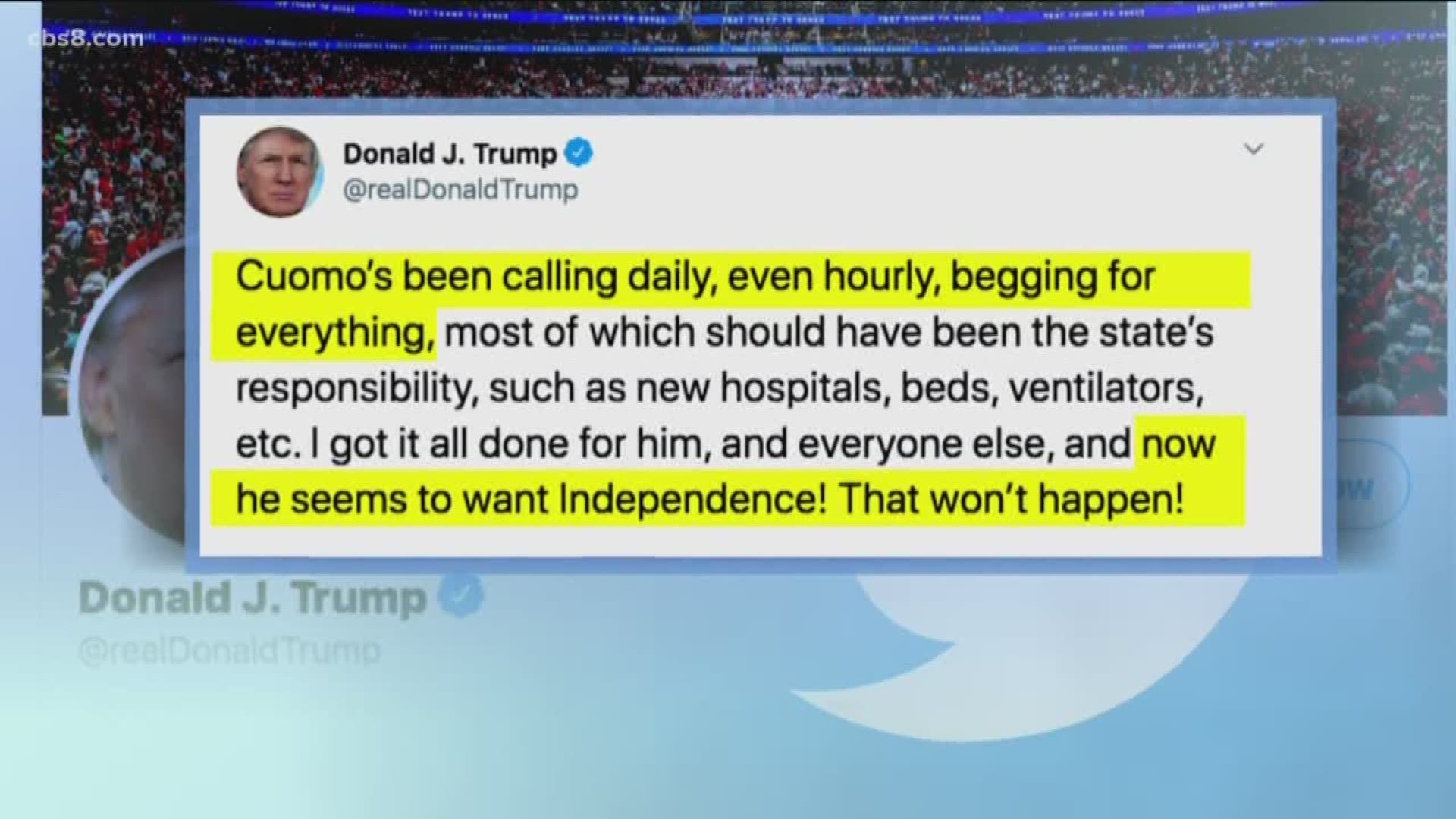SACRAMENTO, Calif. — Governor Gavin Newsom addressed Californians Tuesday and laid out parameters and tools needed before the state would modify California’s statewide stay-at-home orders and other broad COVID-19 interventions.
Newsom revealed a roadmap, that includes six key indicators, for gradually releasing California from the coronavirus restrictions that have kept 40 million residents indoors for much of the last month.
California's six key indicators for modifying the stay-at-home order include:
- Monitor and protect communities through testing, contact tracing, isolating & supporting those who are positive or exposed
- Prevent infection in people who are most at risk
- Handle surges in the hospital and health systems
- Develop therapeutics to meet demand
- Ensure businesses, schools, and child care facilities can support physical distancing
- Determine when to re-institute certain measures, such as the stay-at-home orders
Newsom said loosening of the stay-at-home orders is predicated on two things, the community continuing to practice physical distancing and hospital and ICU numbers flattening.
"If in two weeks we continue to see this decline and personal protective equipment (PPE) needs met, ask me the question then and we can be more descriptive on a timeline," Newsom said.
Newsom also said that the building of the infrastructure must also be met in order to maintain the decrease in numbers and handle any set backs that may arise based on the ebb and flow of things.
On Monday, the governor said he'll work with the governors of Oregon and Washington on a common plan.
The governor's month-long stay-at-home order has shut down many businesses and millions have filed for unemployment. But state and local stay-at-home orders also have been cited as helping slow the rise in COVID-19 cases. Only a modest increase in hospitalizations was reported this weekend.
As of Tuesday's update from the governor, there are a total of 758 deaths in California.
__________________________________________________________
View all News 8 coverage of coronavirus / COVID-19
News 8 has joined forces with The San Diego Foundation to raise immediate, emergency funds for our most vulnerable neighbors in need. Here is how you can help.
We also have a Frequently Asked Questions page we will continue updating with the latest information and reports.
Click here to watch "Facts Not Fear," a News 8 Special on coronavirus from March 26, 2020.
BACKGROUND
According to the CDC, coronavirus (COVID-19) is a family of viruses that is spreadable from person to person. Coronavirus is believed to have been first detected in a seafood market in Wuhan, China in December 2019. If someone is sick with coronavirus, the symptoms they may show include mild to severe respiratory illness, cough, and difficulty breathing.
Currently, there is no vaccine, however, the CDC suggests the following precautions, as with any other respiratory illness:
Know how it spreads
There is no vaccine
The best way to prevent illness is to avoid being exposed to the virus
It is thought to spread mainly from person-person between people in close contact
And believed to be spread by respiratory droplets produced when an infected person coughs or sneezes
Protect yourself
Wash your hands with soap and water for a minimum of 20 seconds
If soap and water aren't available, use hand sanitizer that contains at least 60% alcohol
Avoid touching your eyes, nose, and mouth
Avoid close contact with people who are sick
Put distance between yourselves and others
Protect others
Stay home when you are sick
Wear a facemask if you are sick
Cover your cough or sneeze with a tissue, then throw the tissue in the trash
If you don't have tissue, cough or sneeze into the inside of your elbow
Immediately wash your hands after coughing and sneezing
Clean and disinfect frequently touched objects and surfaces using a regular household cleaning spray or wipe
You can find information on disinfecting and cleaning on the CDC's How to Protect Yourself page.
The California Department of Public Health has issued guidance on the use of cloth face coverings to protect against the spread of the novel coronavirus COVID-19.
The County of San Diego has made face coverings mandatory for those working with the public including grocery stores, pharmacies, gas stations, convenience stores, and similar businesses.
While officials say these face coverings are not a substitute for practices like social distancing and handwashing, there is evidence to suggest that the use of cloth face coverings by the public during a pandemic could help reduce disease transmission. Officials do not recommend the public use N-95 or surgical masks which are needed by health care workers and first responders.

